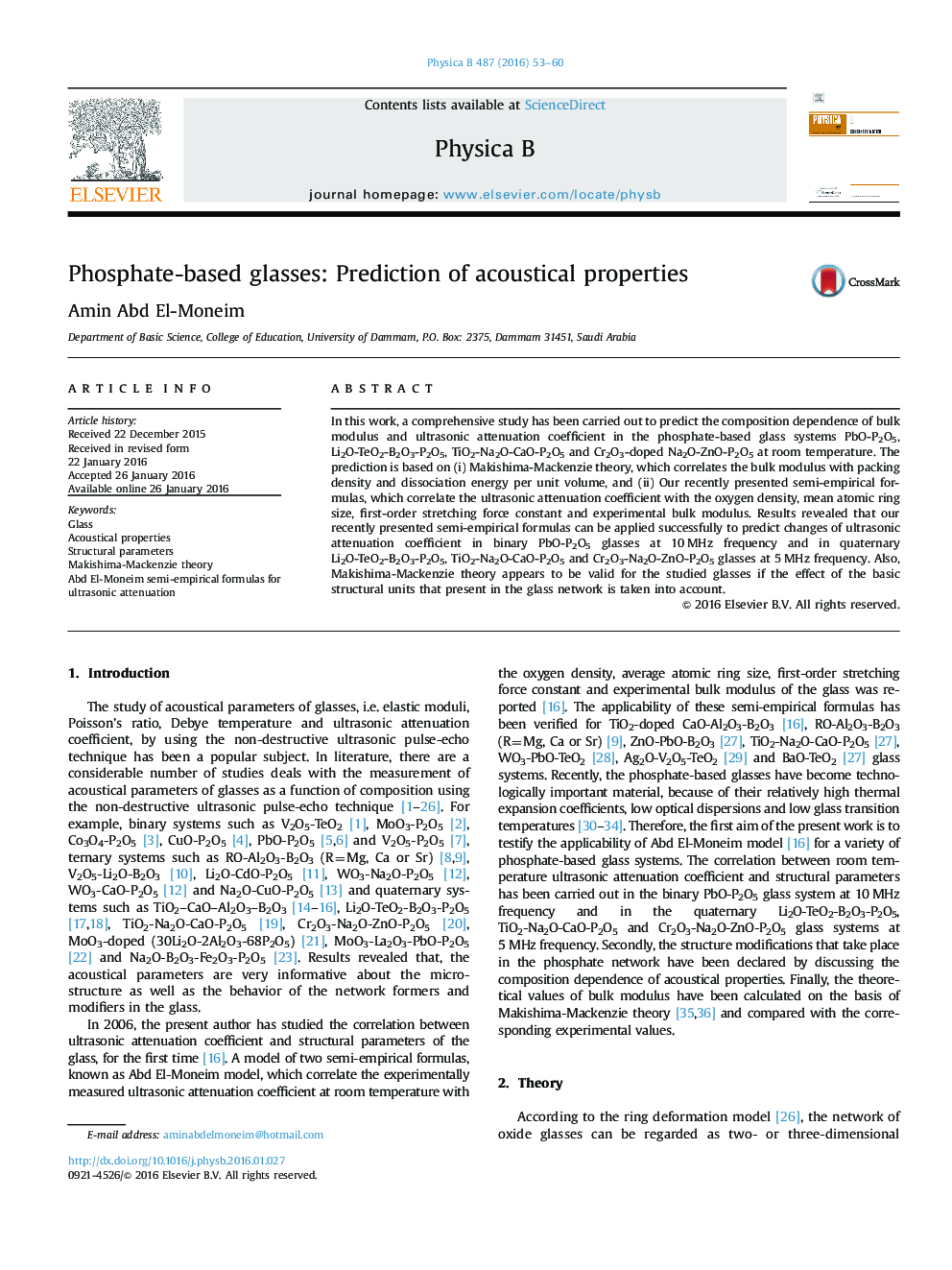| Article ID | Journal | Published Year | Pages | File Type |
|---|---|---|---|---|
| 1808631 | Physica B: Condensed Matter | 2016 | 8 Pages |
In this work, a comprehensive study has been carried out to predict the composition dependence of bulk modulus and ultrasonic attenuation coefficient in the phosphate-based glass systems PbO-P2O5, Li2O-TeO2-B2O3-P2O5, TiO2-Na2O-CaO-P2O5 and Cr2O3-doped Na2O-ZnO-P2O5 at room temperature. The prediction is based on (i) Makishima-Mackenzie theory, which correlates the bulk modulus with packing density and dissociation energy per unit volume, and (ii) Our recently presented semi-empirical formulas, which correlate the ultrasonic attenuation coefficient with the oxygen density, mean atomic ring size, first-order stretching force constant and experimental bulk modulus. Results revealed that our recently presented semi-empirical formulas can be applied successfully to predict changes of ultrasonic attenuation coefficient in binary PbO-P2O5 glasses at 10 MHz frequency and in quaternary Li2O-TeO2-B2O3-P2O5, TiO2-Na2O-CaO-P2O5 and Cr2O3-Na2O-ZnO-P2O5 glasses at 5 MHz frequency. Also, Makishima-Mackenzie theory appears to be valid for the studied glasses if the effect of the basic structural units that present in the glass network is taken into account.
